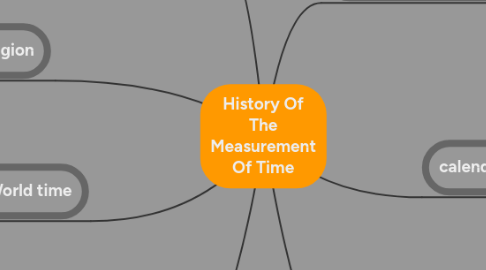History Of The Measurement Of Time
by michael luan

1. Definitions and standards
1.1. The SI base unit for time is the SI second.
1.1.1. The second is the duration of 9,192,631,770 periods of the radiation corresponding to the transition between the two hyperfine levels of the ground state of the caesium 133 atom.
1.2. larger units such as the minute, hour and day are defined, though they are "non-SI" units because they do not use the decimal system, and also because of the occasional need for a leap second
2. World time
2.1. International Atomic Time (TAI)
2.2. Coordinated Universal Time (UTC)
2.3. Greenwich Mean Time (GMT)
2.4. Universal Time (UT)
3. Religion
3.1. Linear and cyclical time
3.2. Numeric and Divine time
4. Sidereal time
4.1. Sidereal time is the measurement of time relative to a distant star (instead of solar time that is relative to the sun). It is used in astronomy to predict when a star will be overhead. Due to the rotation of the earth around the sun a sidereal day is 4 minutes (1/366th) less than a solar day.
5. time measurement devices
5.1. Sundial,An Egyptian device dating to c.1500 BC
5.2. pyramids
5.3. The hourglass
5.4. One of the earliest clocks was invented by Pope Sylvester II in the 990s.
5.5. Electric clocks came into being after 1850
5.6. horology
6. Chronology
6.1. Another form of time measurement consists of studying the past. Events in the past can be ordered in a sequence (creating a chronology), and can be put into chronological groups (periodization). One of the most important systems of periodization is geologic time, which is a system of periodizing the events that shaped the Earth and its life. Chronology, periodization, and interpretation of the past are together known as the study of history.
7. calendar
7.1. Lunar calendars were among the first to appear, either 12 or 13 lunar months (either 346 or 364 days).
7.2. The reforms of Julius Caesar in 45 BC put the Roman world on a solar calendar.


